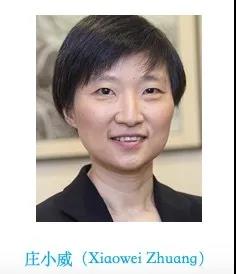Xiaowei Zhuang (SGY class ‘87) won the Distinguished Scientist Award of the Microscopy Society of America.
Xiaowei Zhuang (SGY class ‘87) won the Distinguished Scientist Award of the Microscopy Society of America.


Recently, the Microscopy Society of America (MSA) announced the winners of the Distinguished Scientist Awards of 2020. Physicist David N. Seidman and biologist Xiaowei Zhuang (SGY ‘87) were the two winners.
The Distinguished Scientist Awards aim to commend outstanding senior scientists who have achieved long-term achievements in the field of microscopy or microanalysis, including biological science and physical science. The Distinguished Scientist Awards of 2020 will be awarded at the "Microscope and Microanalysis 2020" (M & M 2020) conference in Milwaukee, Wisconsin, USA on August 3rd.
Xiaowei Zhuang is a biophysicist, a researcher of Howard Hughes Medical Institute and a professor of Physics and of Chemistry and Chemical Biology at Harvard University. Born in Jiangsu, China, in January 1972, she received her BS at USTC in the School of the Gifted Young in 1991, a Ph.D. from the University of California, Berkeley in 1996, and was elected to the National Academy of Sciences in 2012. She was elected to the National Academy of Arts and Sciences in 2013, and was elected a foreign academician of the Chinese Academy of Sciences in 2015.
Zhuang’s main research direction is biophysics. Her pioneering contributions in photonics methods, such as high-resolution optical imaging and single-molecule fluorescence resonance transfer, along with their applications, have greatly promoted breakthrough progress in the field of biomedicine. Her papers have been cited by others more than 12,600 times, and more than 2,000 times for the most cited single article. Currently she is a member of the American Association for the Advancement of Science and a member of the American Physical Society. She is a member of the editorial boards of well-known journals such as "Cell", "eLife", "Annual Review of Biophysics", "Chemical Physics Letters" and "Optical Nanoscopy."
The optical diffraction limit of the spatial resolution of hundreds of nanometers established by Abbe restricts the study of the fine structure of subcellular organelles. To overcome this critical limitation in light microscopy, in 2006, Xiaowei Zhuang’s lab invented a super-resolution imaging method based on single-molecule fluorescence detection named Stochastic Optical Reconstruction Microscopy (STORM), and applied this method to realize three-dimensional ultra-high resolution imaging. Based on the photochemical mechanism, her laboratory synthesized ultra-bright light-controllable dyes and fluorescent proteins with the best performance, further advancing the resolution to several nanometers, nearly two orders of magnitude higher than the optical diffraction limit. On this basis, rapid three-dimensional high-resolution fluorescence imaging of living cells has also been developed. This series of technological developments has brought fluorescence microscopy to the era of molecular-level imaging. Many laboratories around the world have adopted these technologies, and commercial STORM microscopes based on this technology have entered imaging platforms and laboratories around the world, including China, which has greatly promoted biomedical research.
Xiaowei Zhuang is not only a pioneer in developing super-resolution imaging methods, but also a leader in applying these methods. She applies STORM widely from single-celled organisms to complex mammalian brains, discovering new cell structures and revealing completely new mechanisms of action. For example: she found that the membrane skeleton of neuron axons has a surprisingly regular periodic structure; used ultra-high resolution large-volume imaging to draw a map of the neuronal synapse input area, revealing the effect of this area on direction selectivity; revealed the necessity of the mouse telomere protein TRF2 in the formation of telomere loops; and found that sperm-specific calcium channels and other molecules related to calcium signaling pathways form a special structure, which is important for the superactivation of sperm. Xiaowei Zhuang was also one of the first researchers to develop single-molecule fluorescence resonance transfer technology into an effective tool to detect the dynamics of biomolecular structures. Her research on RNA folding has revealed single-molecule transient folding intermediate states and multiple folding pathways that are difficult to detect with routine experiments, demonstrating that RNA folding has a very rugged energy surface. Recently she invented a high-throughput single molecule fluorescence in situ hybridization method, MERFISH, which can image and quantify thousands of RNAs in a natural state in a single cell. She revealed a new regulatory mechanism of the chromatin remodeling complex, and the single virus tracking method she invented can study the interaction between virus and endocytosis machinery when a single virus enters a cell.
We warmly congratulate Xiaowei Zhuang on receiving this well-deserved honor, and look forward to her future achievements!



